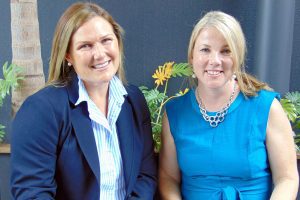Pilates – wasn’t that the celebrity exercise fad from the early 2000s, or maybe exercise for ballet dancers? Or was it for pregnant ladies? Jen Guest explains everyone can benefit from this popular exercise form.
Pilates, or Contrology as it was originally known, is an exercise form developed in the early 1900s by German, Joseph Hubertus Pilates. It is based on his self-educated knowledge of anatomy and biomechanics, his observation of the movement patterns of infants and animals, as well as his self-mastery of boxing, gymnastics and Tai Chi.
Joseph’s work was really ahead of its time. It was initially taken on by the military and then by dancers in New York, before extending into the wider community. The exercises are based on the development and accurate engagement of core muscles. These consist of the deepest layer of the abdominals, the diaphragm and the pelvic floor group of muscles (and yes, gentlemen, you do have a pelvic floor!).
It has been proven that when this ‘cylinder of support’ works in sequence, the skeleton is stabilised, protecting the joints and ligaments and therefore allowing for a safe foundation upon which to work the larger global muscles of the body.
Another factor in Pilates is the calculated use of breath while executing the movements. This encourages full inflation of the lungs and facilitates increased oxygen exchange at a tissue level, improved circulation and lymphatic drainage, improved digestion, muscle contraction and toxin elimination.
Pilates exercises use the resistance of gravity, one’s own body weight and sometimes the addition of bands or springs. Each exercise is executed in a slow and controlled manner, providing appropriate joint/bone loading in correct alignment.
Pilates is a ‘whole body’ exercise method in every sense of the word. It develops joint stability, muscular strength, flexibility, bio-mechanical awareness as well as creating great posture. These benefits collectively contribute to injury recovery, prevention and may also offset in a positive way, many of the physical effects of aging.
Unfortunately from our mid 30s, the body begins to take on the physiological effects of aging. There is a reduction in collagen and elastin, making the soft tissues less elastic. Our nervous tissue also degenerates, causing reduced balance, coordination and even slowed thinking. Calcium reserves are absorbed, reducing bone density in females more than males, but causing weakened bone structures in both. A common pathology is Osteoporosis or a degeneration of the inner bone matrix. Though the pathology cannot be stopped, like some other issues relating to aging, the effects may be slowed allowing for improved mobility and flexibility long term. With age, our maximum attainable heart rate reduces and the blood vessels thicken. Unlike other exercise protocols, Pilates does not encourage a dramatically increased heart rate, nor does it work with a Valsalva abdominal brace, and therefore Pilates protects the ageing cardiovascular system. Correct Pilates techniques also provide joint stability, allowing one to walk briskly and with a correct gait and this is where you may work on increasing your heart rate a little.
More recently, science has begun the research to quantify the outcomes and benefits of Pilates. The accuracy of the exercise provides improved joint and body awareness and alignment. There is appropriate weight bearing through joints and this assists in maintaining or even increasing bone density. The Pilates exercise program is designed to suit each individual and his or her specific needs. It is based on a rehabilitative approach, providing assistance for any pathology or disease process. It is never too late to begin; it is accessible to all activity levels and current abilities. Pilates comes in the form of mat classes or with the use of special equipment within a studio setting. You should expect to have an initial assessment when commencing the program, where the instructor can discuss and assess history, flexibility, strength and abdominal control and guide the participant to an appropriate level program. The classes will work you carefully and safely, whilst offering challenge and providing an opportunity to enjoy an increased social network of like-minded people to work alongside.
So let’s go and try some Pilates classes. You will be quite amazed at how it makes you feel inside and out and will be suitably impressed at how your body shape, strength and posture will show changes within 4-6 weeks. As Joseph Pilates himself once said …’In 10 sessions you will feel the difference, in 20 you will see the difference and in 30 you will have a whole new body’ (consistent sessions, of course).
“Pilates exercises use the resistance of gravity, one’s own body weight and sometimes the addition of bands or springs. ”
ABOUT
Jen Guest
Jen Guest is the president of the Pilates Alliance Australasia and Principal Physiotherapist at Smart Health Training and Services.
The Pilates Alliance of Australasia (PAA) is a leading industry body in Australia. Registered members have not only completed an Australian Government recognised training standard to teach the Pilates Method, but are deeply committed to ongoing professional development and adherence to the PAA Code of Ethics. All registered full members qualify for a Provider Number with a number of health insurance companies, allowing clients to claim against health and well being, exercise rehabilitation or Pilates (Individual health policies have different levels of cover and rebate allocations).
Visit www.pilatesalliance.net to gather further information, lists of registered instructors and studios.
[related_ad category=”996″ max_size=”3″ title=”Related Offers”] [related_ad category=”6″ max_size=”3″ title=”Related Stories”]




















Add Comment